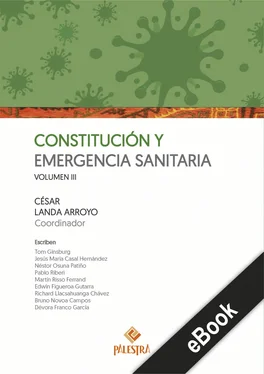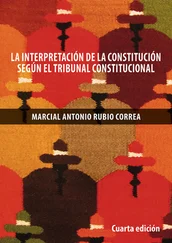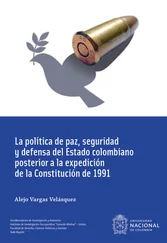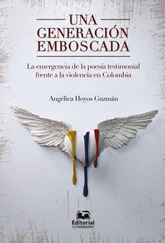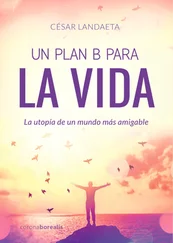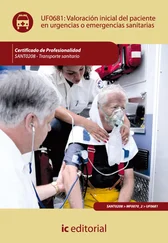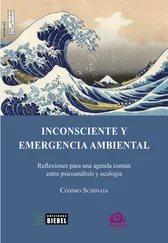César Landa - Constitución y emergencia sanitaria
Здесь есть возможность читать онлайн «César Landa - Constitución y emergencia sanitaria» — ознакомительный отрывок электронной книги совершенно бесплатно, а после прочтения отрывка купить полную версию. В некоторых случаях можно слушать аудио, скачать через торрент в формате fb2 и присутствует краткое содержание. Жанр: unrecognised, на испанском языке. Описание произведения, (предисловие) а так же отзывы посетителей доступны на портале библиотеки ЛибКат.
- Название:Constitución y emergencia sanitaria
- Автор:
- Жанр:
- Год:неизвестен
- ISBN:нет данных
- Рейтинг книги:5 / 5. Голосов: 1
-
Избранное:Добавить в избранное
- Отзывы:
-
Ваша оценка:
- 100
- 1
- 2
- 3
- 4
- 5
Constitución y emergencia sanitaria: краткое содержание, описание и аннотация
Предлагаем к чтению аннотацию, описание, краткое содержание или предисловие (зависит от того, что написал сам автор книги «Constitución y emergencia sanitaria»). Если вы не нашли необходимую информацию о книге — напишите в комментариях, мы постараемся отыскать её.
César Landa Arroyo: Ex Presidente del Tribunal Constitucional del Perú. Profesor de Derecho Constitucional en la Pontificia Universidad Católica del Perú y en la Universidad Nacional Mayor de San Marcos.
Constitución y emergencia sanitaria — читать онлайн ознакомительный отрывок
Ниже представлен текст книги, разбитый по страницам. Система сохранения места последней прочитанной страницы, позволяет с удобством читать онлайн бесплатно книгу «Constitución y emergencia sanitaria», без необходимости каждый раз заново искать на чём Вы остановились. Поставьте закладку, и сможете в любой момент перейти на страницу, на которой закончили чтение.
Интервал:
Закладка:
The next major set of challenges came from religious groups, which claimed that bans on gatherings of more than ten people, for example, infringed on freedoms of worship. In one case, a governor refused to allow an Easter service in which worshipers would remain in their cars, prompting a lawsuit. The Sixth Circuit Court of Appeals ruled that lockdowns that singled out religious services without comparable restrictions on secular activities violated the First Amendment rights to free exercise of religion. The Supreme Court stayed away from these cases for several months, but in November issued a decision that generated a good deal of attention. In Roman Catholic Diocese of Brooklyn v. Cuomo, the Court ruled that a New York ban on religious gatherings of more than ten people constituted an unconstitutional interference with the First Amendment provisions protecting the free exercise of religion. The Court pointed out that the Governor’s order limited the number of people without regard to the size of the building, and hence was not narrowly tailored to the goal. In other cases, the Court argued, governors had allowed casinos, restaurants, and marijuana dispensaries to remain open while restricting religious services. This was clearly an inappropriate burden on religion.
The Federal government’s role in pandemic response is most apparent in providing a response. Using several statutory authorities, the Department of Health and Human Services declared a state of emergency on January 31, allowing expanded telemedicine and the release of national stockpiles of masks and other personal protective equipment. President Trump invoked the Defense Production Act, which allows the government to order private firms to prioritize its own orders and to control distribution. In March he declared an emergency under a statute, allowing the Federal Emergency Management Agency to get involved. Later, the Congress approved a public-private partnership called Operation Warp Speed, which successfully funded the development of vaccines by private companies.
As the lockdowns dragged on and the economic carnage became apparent, protestors began to chafe under the restrictions, and demonstrations emerged. Most came from the political right, but some came from the so-called “anti-vaxxers” on the political left, who oppose the taking of vaccines. Some lawsuits were filed in April, but courts were generally unwilling to question the decisions of the elected representatives. As time went on and the economic costs mounted, the President announced that the pandemic response had to end, and the economy had to re-open. Of course, under the federal system this was not his decision. Governors seemed to ignore the President: Republicans like Georgia’s Brian Kemp re-opened even before Trump gave the green light; Democrats like New York’s Andrew Cuomo and California’s Gavin Newsom kept restrictions in place, and as a second wave of the virus hit in June, ramped up some restrictions again.
As a practical matter, the lockdown restrictions on large assemblies became impossible to enforce after the emergence of mass demonstrations in May, prompted by the killing of a black man named George Floyd by police in Minneapolis. As these protests spread around the country, police found themselves unable to enforce restrictions on mass gatherings. Indeed, the presence of the lockdown demonstrators, only a month earlier, may have made the government less able to respond to the anti-policing protests. After all, the First Amendment prohibits the government from favoring one type of speech over another. Indeed, a Federal District Court in New York enjoined the state from enforcing prohibitions against religious services, pointing out the Mayor Bill de Blasio appeared without a mask at a demonstration that far exceeded the 25-person limit imposed by state law.1
Politically, many Americans seemed to have a strong aversion to the wearing of masks, a simple step that would do much to prevent the spread of the disease. The Governor of Nebraska threatened to withhold funds from any counties that did require masks. Judges began to get involved in calibrating the response: a federal judge in Michigan, for example, held that there was no rational basis for keeping gyms closed, and ordered the Governor to reopen them. But this order was stayed by the Sixth Circuit Court of Appeals.
Most of the state statutes allowing Governors to use emergency measures have temporal limitations, typically 30 days. After the initial period expired, most governors extended the lockdowns by unilateral order. Some lawsuits challenged these decisions but none to my knowledge has been successful. The standard of judicial review for all these matters was whether the government had a “rational basis” for its decision, which is a very easy standard for the government to meet, given the obvious risks from a pandemic.
A special issue arose regarding elections, a challenge faced by many countries around the world. The United States had a presidential election in November, and preparations for it were complicated by the pandemic. A major conflict arose in the State of Wisconsin, which has been ground zero for Republican efforts to lock in their power. The elections scheduled for May 2020 included a primary for the presidential election, and also a vacant state supreme court seat. With trouble find poll workers, the state’s Governor Tony Evers, a Democrat, sought to postpone the election. But the legislature, controlled by Republicans, disagreed. There were major technical problems with absentee ballots not being mailed in time. A federal district judge allowed the Governor to extend the period by which absentee ballots could be postmarked, but the Republican party challenged this decision. In an extraordinary intervention, the US Supreme Court by a vote of five to four overturned the District Court decision, saying the election had to go on just as scheduled. People stood in long lines to vote, and several dozen caught coronavirus because of the primary election, but it led to the defeat of the Republican candidate for the supreme court.
The pandemic has involved judges deeply in election law, leading them to engage in robust review. The Supreme Court was inundated with cases before November, sometimes issuing orders and other times not. Federal and state courts have ordered state election officials to change deadlines, to hold elections which they had decided to cancel, and to allow all voters to cast absentee voting in states in which those ballots were limited. This is a very unusual development because normally American courts do not consider government omissions to be a source of constitutional violations. For example, the Sixth Circuit held the rules requiring a certain number of signatures to appear on a state ballot were a significant burden on the right to vote, under the circumstances of COVID. Virginia’s requirement that an absentee ballot be signed by a witness would not be a burden in normal times, but in light of the pandemic became a burden.2 These are significant changes, and move courts toward guaranteeing participation as if that is a positive right, rather than a negative right to be free from government interferences As Rick Pildes has noted, courts are thus saying that laws that would be constitutional in normal times are unconstitutional during the pandemic.3 In November, there was record turnout that led to the defeat of populist demagogue Trump. This was a major constitutional success during the pandemic, and perhaps a public health success as well.
The best way to characterize the American constitutional response to the coronavirus pandemic is as one of a dialogue among governmental institutions. The primary actors have been state governors, and they have generally been very popular during this period. Loud and vocal groups have challenged them, mainly about the duration and extent of lockdowns. Freedom of assembly was in great evidence throughout the period of the coronavirus pandemic, as was freedom of speech. Various coronavirus deniers could promulgate their views, which seem to be popular among a large portion of the electorate.
Читать дальшеИнтервал:
Закладка:
Похожие книги на «Constitución y emergencia sanitaria»
Представляем Вашему вниманию похожие книги на «Constitución y emergencia sanitaria» списком для выбора. Мы отобрали схожую по названию и смыслу литературу в надежде предоставить читателям больше вариантов отыскать новые, интересные, ещё непрочитанные произведения.
Обсуждение, отзывы о книге «Constitución y emergencia sanitaria» и просто собственные мнения читателей. Оставьте ваши комментарии, напишите, что Вы думаете о произведении, его смысле или главных героях. Укажите что конкретно понравилось, а что нет, и почему Вы так считаете.
